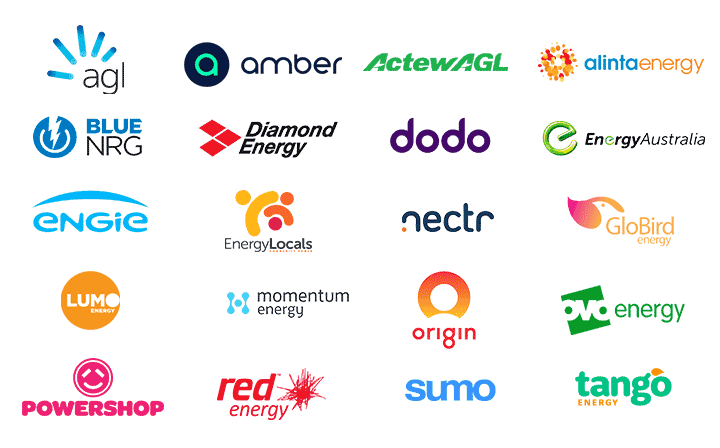The success of solar means lower daytime FITs
Solar owners are very familiar with the value they receive from rooftop PV. By generating electricity, a household can reduce the amount of power they need to buy from the grid by typically 30% to 40%. Plus, they receive a feed-in credit for their excess solar. However, feed-in tariffs have fallen over time due to an abundance of energy during the middle of the day. That’s because of 3 million solar homes and many large-scale solar farms. So exporting solar during the day is becoming much less rewarding.
Batteries can lift your Feed-in Tariff
To understand the financial value batteries create, we need to look at the extra returns available when you can store and export solar to receive higher FITs. Battery owners joining VPPs, and to a greater extent, those on market-linked plans, can access much higher feed-in tariffs by exporting excess energy in the evening when prices spike.
In our case, on a market-linked plan from Amber, we received an average feed-in tariff of 34c per kWh over 9 months by exporting energy from our battery during the evening.
Without a battery, our solar-only feed-in rate exporting in the middle of the day would have averaged ~16c per kWh, on Amber’s market-linked feed-in tariff over the last 9 months.
Across nine months, our battery earned us ~$1732 (9,625kWh exported x 18c difference between evening and daytime exports).
Why batteries make sense and dollars
What’s important here is the difference between the feed-in tariff rate of 34c storing excess solar and exporting it at peak times compared to sending it straight from your panels to the grid at the lower 16c rate. Any battery owner with at least some spare storage could have achieved that 18 cent uplift in feed-in tariff.
As well as making some money through exporting at peak times, our storage ensured our fully electric home for nine months avoided buying at peak and shoulder times too. As a result, we were shielded from the high costs of purchasing energy in a market-linked plan and had enough spare battery capacity to take advantage of those high prices.
A little extra storage is enough.
If you are looking to get more value for your solar by adding a battery, then you’ll need enough capacity to be able to comfortably cover your own needs first. Then any spare capacity you can allocate to exporting at the highest possible rates each day will provide a much greater feed-in tariff. The first couple of kWh of excess storage offers the best return.
Killing it right now!
Our battery has paid off handsomely, and we’re earning peak returns. Here are our usage and feed-in tariff rates for the first six months of 2022, along with the monthly credits earned since November 2021, to give you some insight. Any solar battery household with spare capacity could achieve this effective feed-in tariff. The size of credits is down to our system size (PV and battery).
| Month | Avg Usage Rate | Avg Feed-in Tariff | Difference | Bill Credit |
|---|---|---|---|---|
| Nov 2021 | 16c | 11c | 5c | -$65.29 |
| Dec 2021 | 6c | 10c | -4c | -$90.97 |
| Jan 2022 | 11c | 10c | 0c | -$81.13 |
| Feb 2022 | 11c | 15c | -3c | -$64.5 |
| Mar 2022 | 13c | 17c | -3c | -$9.08 |
| Apr 2022 | 18c | 29c | -12c | -$95.84 |
| May 2022 | 22c | 82c | -61c | -$492.45 |
| Jun 2022 | 29c | 85c | -55c | -$440.98 |
| Jul 2022 | 29c | 65c | -36c | -$295.99 |
| Aug 2022 | 14c | 33c | -19c | -$191.66 |
| Total (Nov 21-Aug 22) | -$1,827.89 |
The table above shows that high feed-in tariffs are the key to achieving credits on the bill. Those months of volatility and high wholesale prices meant more significant returns for battery owners who could export their excess energy back to the grid. And while 2022 has seen unprecedented wholesale electricity prices since April, we achieved similar returns in previous years in May to August, when peak prices occur more frequently.
And we still have more levers to pull to increase returns and support more renewables in the grid. In a subsequent article, we’ll share those levers, including how we expect to increase that battery margin from 18 cents to 28 cents per kWh and doubling our returns over the next 18 months while reducing peak loads on our local distribution network.
So what have we done to achieve this?
Here’s an overview of our household’s setup:
- all electric home (brick veneer with double-glazed windows)
- equivalent of 15kW unshaded solar PV panels (technically 23kW of panels that are heavily-shaded)
- 50kWh custom lithium battery (I sourced a great deal on this – read on for the breakdown)
- ducted air conditioning for heating and cooling
- heat pump hot water system
- heat pump dryer
- high-efficiency appliances – dishwasher, fridge, washing machine, computer monitors etc
- 2 x EVs
Electricity retailer: Amber. Market linked plan
Network Tariff: Ausgrid EA959/960 two-way TOU trial from Sep 2022, previously EA116 demand
Retail rates:
Avg retail usage (import) rate = 23c per kWh
Avg Feed-in Tariff (export) rate = 34c per kWh
What does an average day look like:
Every day we fill our home battery, charge our Electric Vehicles and heat or cool our home with air conditioning, all powered by solar. We supplement that by buying power from the grid in the middle of the day when prices are low enough to make money exporting into the evening peak.
To cover our household consumption overnight and avoid buying power from the grid (when it’s mostly coming from fossil fuel generation) we leave sufficient battery capacity after the evening peak export period.
Battery costs
Our home storage uses a custom lithium battery pack. That battery pack consists of the following:
- Used 54V 480Ah (17s3p) LiFePO4 low voltage battery pack = ~$6,000
- (Effectively 54kWh of usable battery bought second hand from an electric bus trial with only very minimal use.)
- Batrium battery management system = ~$1,700
- Battery boxes, cabling etc = ~$1,000
- Goodwe 5000SBP battery inverter = ~$3,000 inc installation by sparkie
- ned energy automation solution = ~$300
- Many hours of my time = $0 (it’s a hobby, and I have a son, wife and community whose futures I’m happy to invest my spare time into)
Total storage cost = ~$12,000
- $200-300 Installed nominal cost per kWh of storage.
Estimated Energy Savings
2019/20 FY = ~$1000 (AGL Solar Savers)
2020/21 FY = $3380 (Discover Energy VPP)
2021/22 FY = $1510 (Discover + Amber)
2022/2023 = $4500 (Amber $296 July credit + $154 Aug credit + Ausgrid trial tariff => 30c x 50kWh x 270 days)
2023/2024 = $5500 (Amber + Ausgrid trial tariff => 30c x 50kWh x 270 days 30c x 50kWh x 365 days)
Total bill credits over 5 years = >$15,000
2024/2025 onward = estimate > $2,000 p.a.
It’s a little difficult for the first year with AGL to separate the value of solar and battery. However, by self-consuming our own solar, we avoided peak TOU rates in Ausgrid of ~50c per kWh. So, we calculated we were better off by $1,000 as the battery allowed us to use a TOU tariff. This saved us money charging our EVs at off-peak rates. From then on, we achieved larger credits with Discover Energy and Amber by actively charging the battery from low priced grid electricity. Then we would export from the battery into a high feed-in tariff or peak VPP/market pricing.
With daytime feed-in tariffs well under 10 cents in most states and usage rates on the increase, it would be a struggle for an all-electric home in Sydney to do much more than break even on solar PV alone, even with a big PV system.
So, here we’ve achieved storage payback in under five years. Along the way, we’ve had a mix of general (AGL Solar Savers), VPP (Discover Energy VPP Premium) and market-linked (Amber) plans.
Bigger isn’t better
It’s important to highlight that a larger battery doesn’t equate to better payback period. The key is to have a battery large enough that you can export when feed-in tariffs or market rates are high. That might only be 15 minutes to an hour a day.
Note: We have an SMA 15000TL-10 inverter and 2 x Goodwe 5048ES hybrid inverters. I consider them part of our solar array from a cost perspective. Solar savings paid off the SMA inverter in 2020 after 7 years. We expect a similar 7 year payback period for the solar panels and Goodwe hybrid inverters installed in 2021.
The lessons
Don’t listen to the naysayers. Especially when they’re not factoring in all the opportunities to maximise battery returns because they don’t understands the plans on offer, or what a savvy battery owner can do. The naysayers will tell you that “batteries are worthless at the end of the warranty period”. It’s not true – batteries don’t disintegrate on the day the warranty runs out. Most will run for many more years and thousands of cycles. If that “naysayer” assumption is questionable, how many others of theirs are too?
For those with large batteries and/or the ability to shift loads (electric vehicles, hot water systems, pool pumps, dryers, heating/cooling, washing machine etc) then there is potential to get much better savings. At the same time, battery owners actively support increased renewables in the grid while pushing down demand when fossil fuels are predominant.
We’ve written a separate article on the levers you need to pull to maximise returns. While not everyone can access all these levers, something as easy as switching tariffs or shifting loads can provide a significant ongoing financial benefit. This will help maximise your savings, support more renewables in the grid and get your battery investment back well before the warranty ends (if that matters to you).



